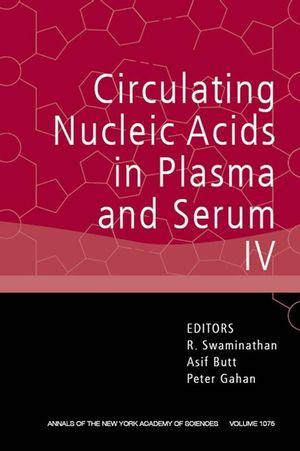Circulating Nucleic Acids in Plasma and Serum IV, Volume 1075ISBN: 978-1-57331-627-9
Paperback
372 pages
October 2006, Wiley-Blackwell
 |
||||||
The focus in this volume is on three major applications of the
circulating nucleic acids detection method: cancer, fetal medicine,
and diseases such as diabetes, stroke, and myocardial infarction.
In addition, there are reports on the biology and origins of
circulating DNA and RNA and on improved methods for the detection
of nucleic acids in plasma and serum.
The circulating DNA found in cancer patients has many
characteristics in common with their tumors, which made it an
attractive candidate for use in the diagnosis and management of
patients with malignancies. This method can also be applied to the
assessment of the sublinical tumor burden in cancer patients, thus
reducing the risk of unnecessary chemotherapy.
Detection of nucleic acids circulating in maternal serum means
that fetal diagnosis may be possible without resorting to the more
dangerous and invasive methods now used (e.g., amniotic fluid and
chorionic villus sampling). Detection of problems in the pregnancy
such as preeclampsia and intrauterine growth retardation may also
become possible through maternal blood samples.
In diabetic patients, circulating nucleic acids can be used for
the early detection of developments such as retinopathy.
The benefits of using circulating nucleic acids in the diagnosis
and management of cancer and chronic disease will be realized
through earlier detection by means of this less expensive and less
invasive testing technique and through its potential for closer
monitoring of the disease.
NOTE: Annals volumes are available for sale as individual books or as a journal. For information on institutional journal subscriptions, please visit www.blackwellpublishing.com/nyas.
ACADEMY MEMBERS: Please contact the New York Academy of Sciences directly to place your order (www.nyas.org). Members of the New York Academy of Science receive full-text access to the Annals online and discounts on print volumes. Please visit http://www.nyas.org/MemberCenter/Join.aspx for more information about becoming a member



